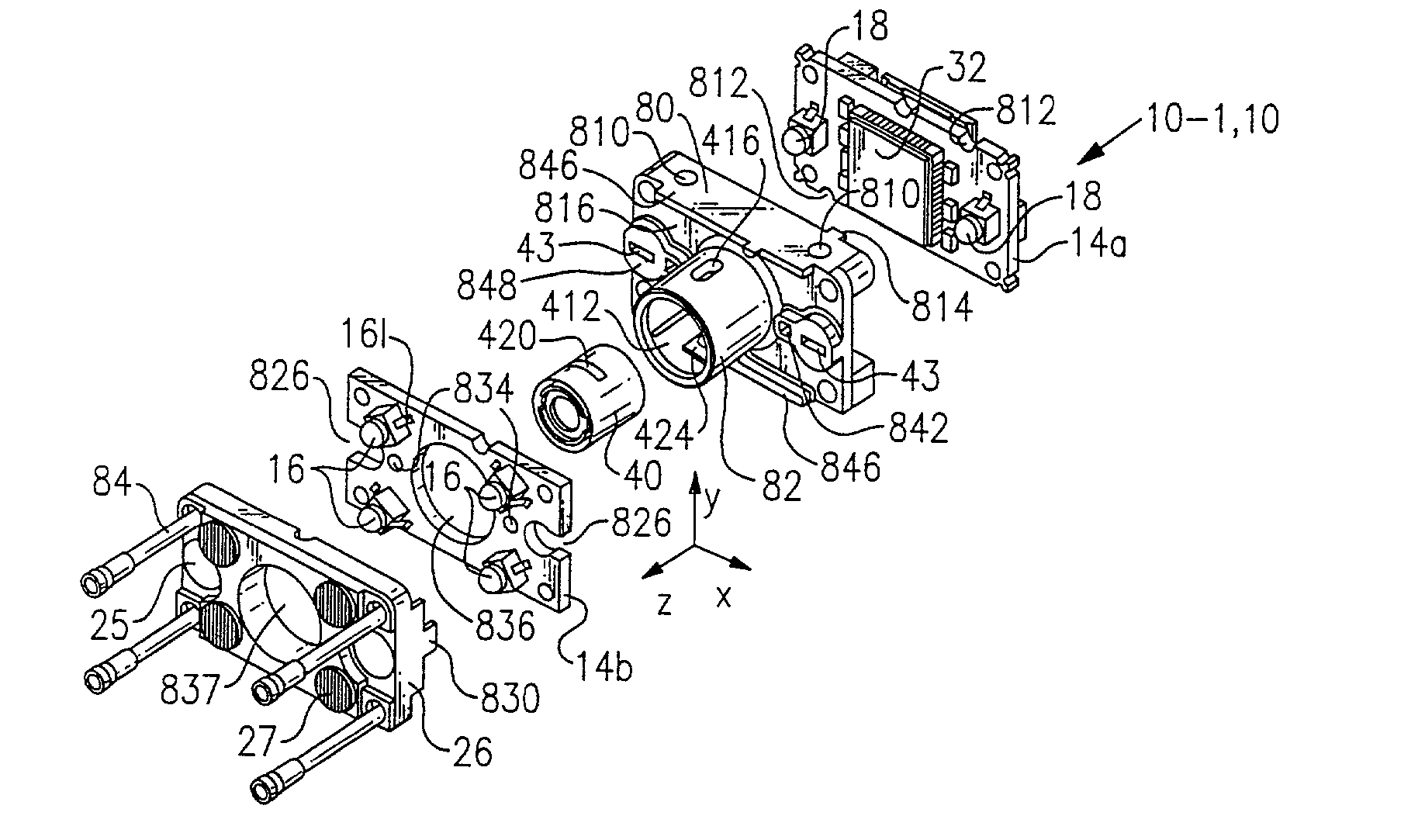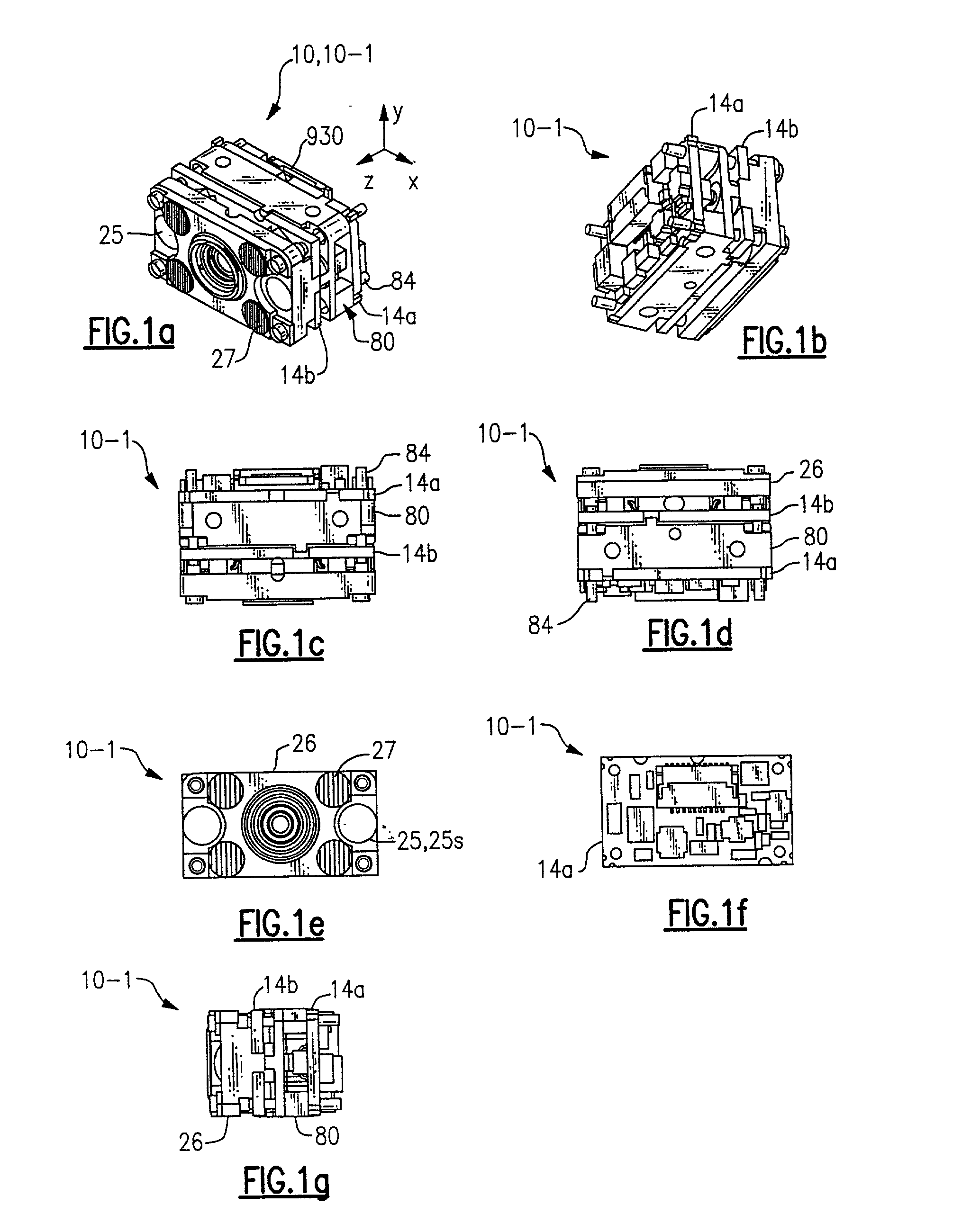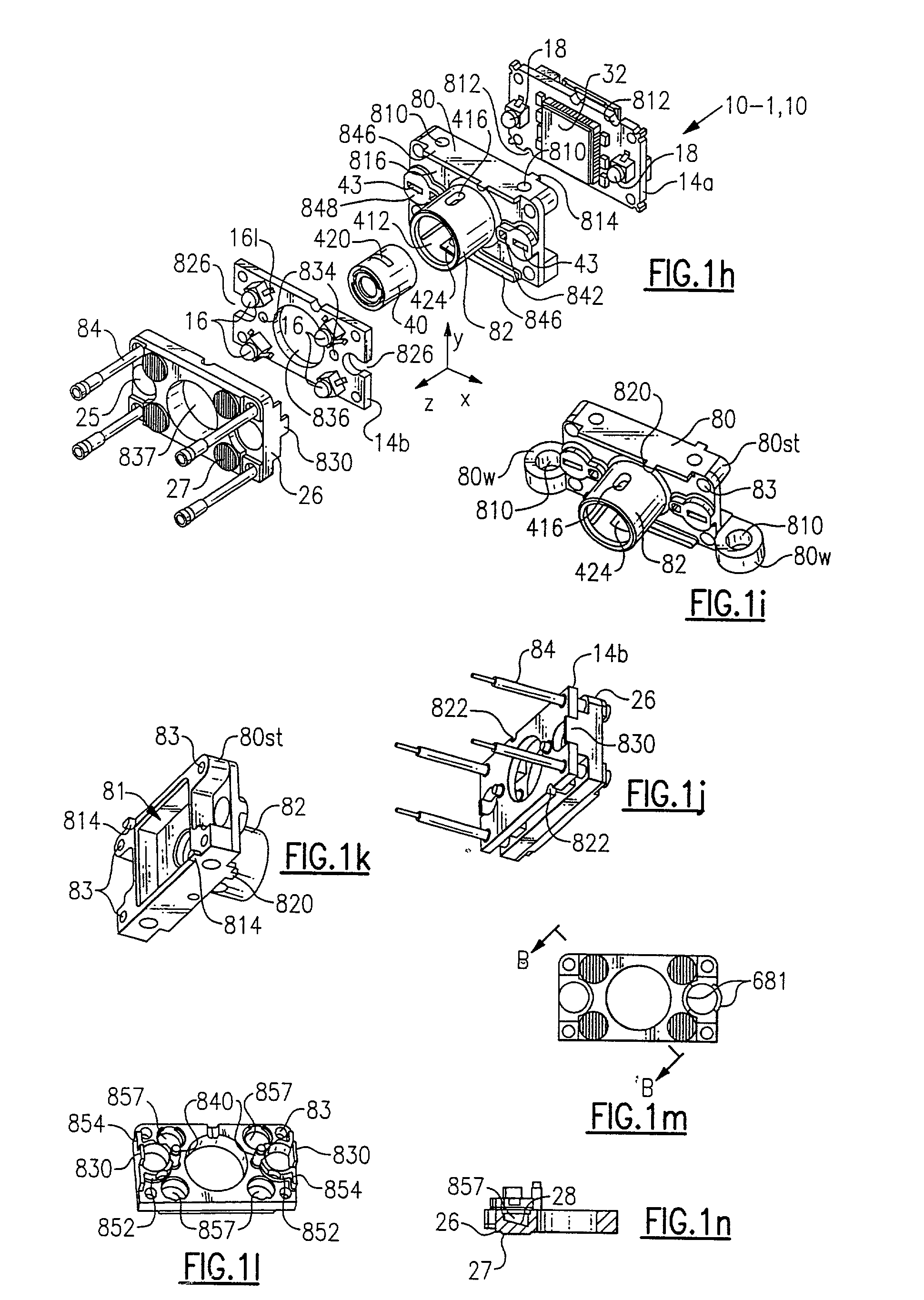Optical reader for imaging module
an imaging module and optical reader technology, applied in the direction of instruments, printed circuit non-printed electric components association, sensing by electromagnetic radiation, etc., can solve the problems of not being able to capture 2d images well, the structure of the illumination element and the structure supporting it consuming substantial space, and the laser based imaging module is not well adapted to capture 2d images
- Summary
- Abstract
- Description
- Claims
- Application Information
AI Technical Summary
Benefits of technology
Problems solved by technology
Method used
Image
Examples
example 1
[0165] An aiming pattern generation system 685 comprising a pair of aiming LEDs 18, a pair of apertures 43, and a pair of spherical lens 25s substantially as shown in FIG. 1h is designed such that each half of the aiming pattern generating system has the properties as presented in Table 1.
1 TABLE 1 Aperture size: 1.85 mm (W) .times. 0.3 mm (H) LED (18): Agilent Subminiature HLMP QM00 (690 mcd) PCB (14a) to aperture 1.07 mm (entry surface) distance: Aperture to lens member 4.1 mm light entry surface distance: Lens thickness: 1.7 mm Back focal length: 5.16 mm Front focal length: 5.16 mm Lens (25s) radius of r2 = -3 mm curvature: Lens material: Polycarbonate Paraxial magnification: -1.028
[0166] Aiming system 685 generates aiming pattern light rays substantially as is illustrated in the computer modeled side view of system 685 of FIG. 6z. It is seen that the small size of aperture 43 substantially prevents light rays from reaching borders 686 of lens 25s in the vertical plane (aiming li...
PUM
 Login to View More
Login to View More Abstract
Description
Claims
Application Information
 Login to View More
Login to View More - R&D
- Intellectual Property
- Life Sciences
- Materials
- Tech Scout
- Unparalleled Data Quality
- Higher Quality Content
- 60% Fewer Hallucinations
Browse by: Latest US Patents, China's latest patents, Technical Efficacy Thesaurus, Application Domain, Technology Topic, Popular Technical Reports.
© 2025 PatSnap. All rights reserved.Legal|Privacy policy|Modern Slavery Act Transparency Statement|Sitemap|About US| Contact US: help@patsnap.com



